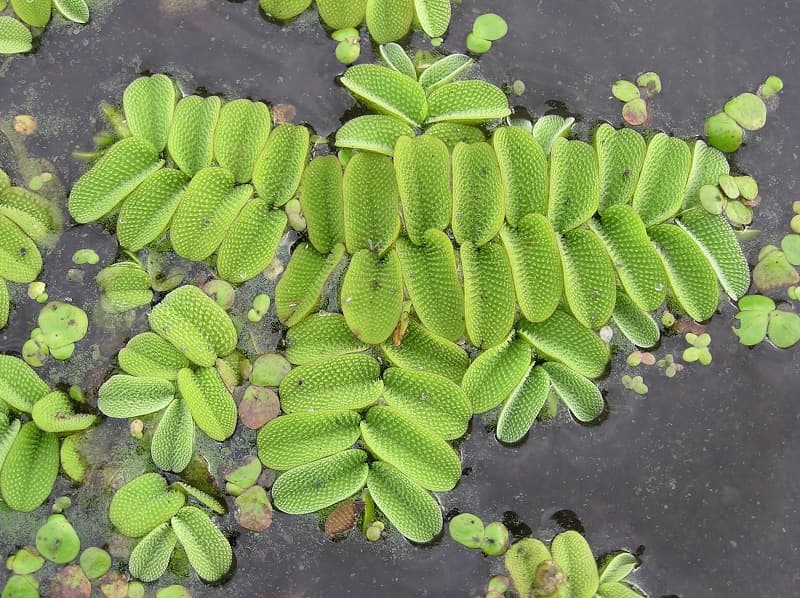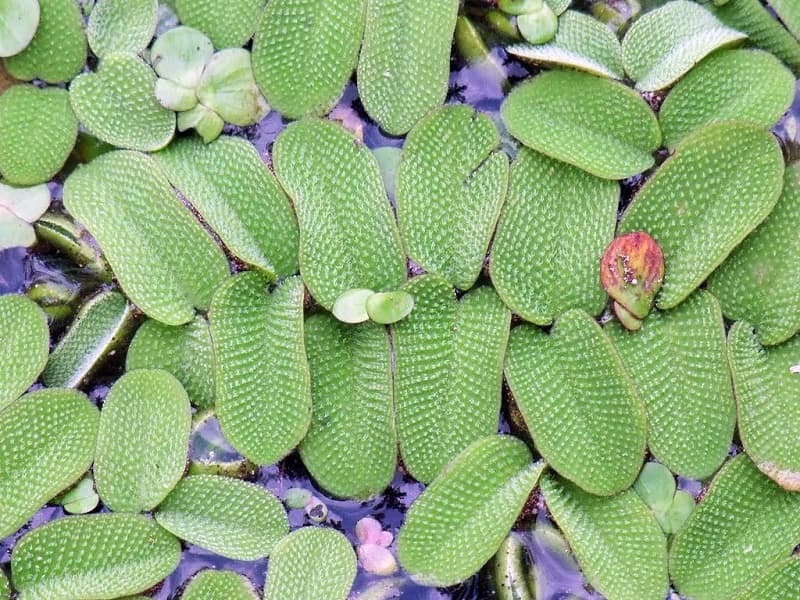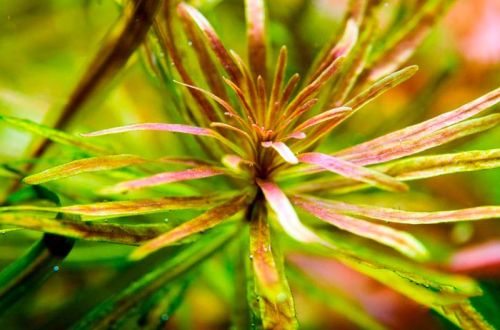
Salvinia floating
Salvinia floating, scientific name Salvinia natans, refers to annual aquatic ferns. The natural habitat is in North Africa, Asia and southern regions of Europe. In the wild, it grows in warm, nutrient-rich stagnant wetlands and floodplains.

Although Salvinia acuminata is considered a popular aquarium plant, it is not actually used in aquariums. The fact is that other related species are supplied under this name: eared Salvinia (Salvinia auriculata) and giant Salvinia (Salvinia molesta).
The reason why true Salvinia floating is not found in aquariums is quite simple – the life cycle is limited to only one season (several months), after which the plant dies. Other types of Salvinia are perennial species and are more suitable for growing in aquariums. (Source Flowgrow)

The plant forms a small branched stem with three leaves at each node (the base of the petioles). Two leaves floating, one underwater. Floating leaves are located on the sides of the stem, have an elongated oval shape up to one and a half centimeters long. The surface is covered with many light hairs.
The underwater leaf is noticeably different from the rest and has a different purpose. It has turned into a kind of root system and performs similar functions – it absorbs nutrients from the water. In addition, it is on the “roots” that disputes develop. In the fall, with the onset of cold weather, the fern dies off, and in the spring, new plants grow from the spores formed over the summer.

In its appearance and size, Salvinia floating is comparable to Salvinia small and differs only in elongated leaves.
In aquariums, plants of the Salvinia genus are considered easy to care for. The only condition is good lighting. Water parameters, temperature and nutrient balance are not essential.
Basic information:
- Growth rates are high
- Temperature — 18-32°С
- Value pH — 4.0–8.0
- Water hardness – 2-21°GH
- Light level – moderate or high
- Use in an aquarium – not used
Scientific Data Source Catalog of Life




